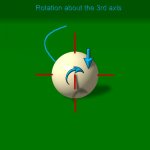Since when is using the proper words childish? And, this from someone that says "nothing but good intentions"? Putting things in the correct words and context is what communication is all about. If you can't do that, you shouldn't be doing it. Words mean a lot. And, thanks for the slam again, guess that was also part of your good intentions.
Rick, I'll spell it out for you. Way too much of the things you and CJ both post is a bunch of nonsense because neither one of you really know how the balls react and why. So, you make up stuff to try and get your point across, thinking no one will notice.
That is very insulting to anyone you are trying to help. And, neither one of you give a darn about that little fact. Everytime either of you are called on it, you both have nothing but insults, or just ignore it. It's a great and honorable thing to help others. You cheapen that and cause a great disservice when you put out incorrect material. Just adding "IMO" all the time does not excuse it. It only shows that you want to "be somebody" and don't really care at all if the people reading your material really improve or not. You feel you just have to add something whether it's right or not. That's not helping anyone, only hurting people.
Bottom line- if you are going to help people, at least take the time to learn what you are talking about so you don't supply misinformation. At least care about the people you are replying to. Make this a good place for people to go to, to learn about pool. Not somewhere where people go to that will only screw up their game and perpetuate myths and fables. Have some respect for yourself and the people you are trying to help.
You and CJ both feel that I am nothing more than a big thorn in your sides. Ever stop and wonder why? Why only you two and one other? Why always the same theme from me? Say what you mean and mean what you say. If you still don't know why, read the above paragraphs again. I'm not always right, and when I am wrong, I fully expect and want someone "in the know" to correct me so I don't make the same mistake again. However, it sickens me when certain people constantly want to argue against known science of the game and then resort to calling names just to try and save face. I hate arguing. But, I hate misinformation even more.
This is supposed to be the age of information. Instead, it has become the age of misinformation.
